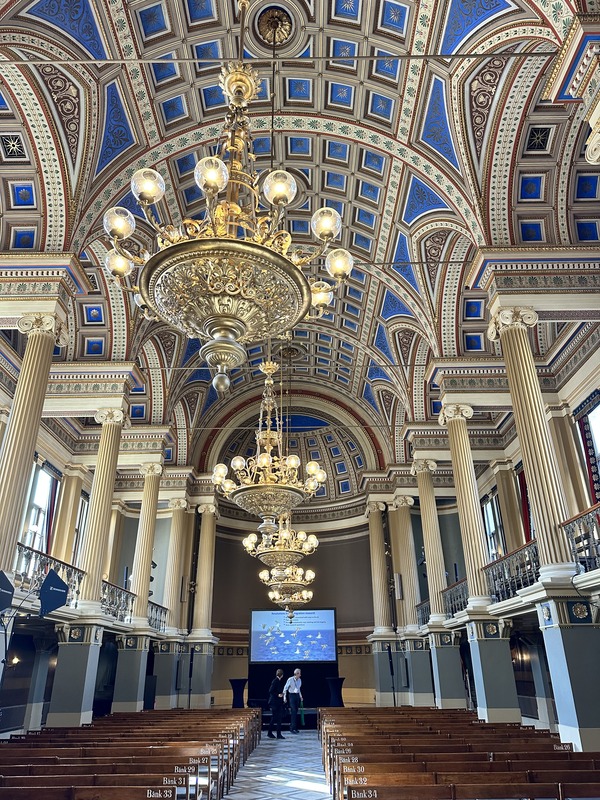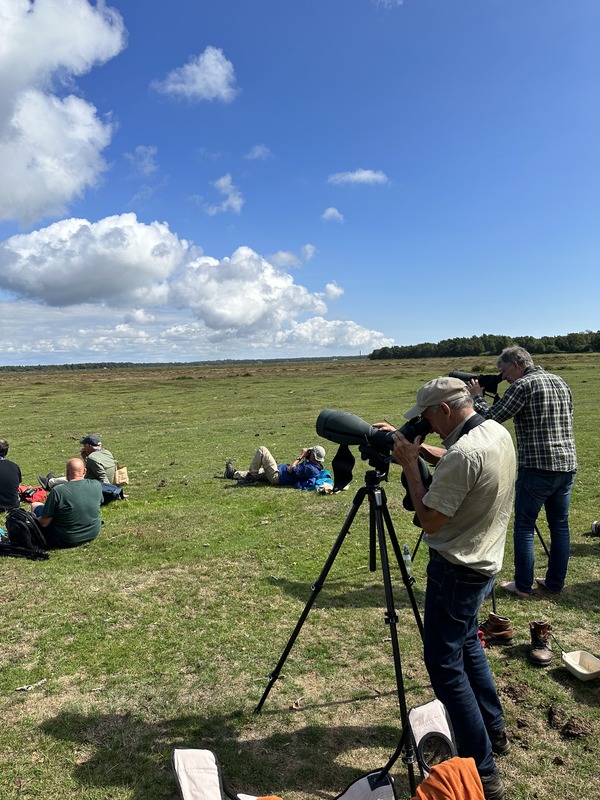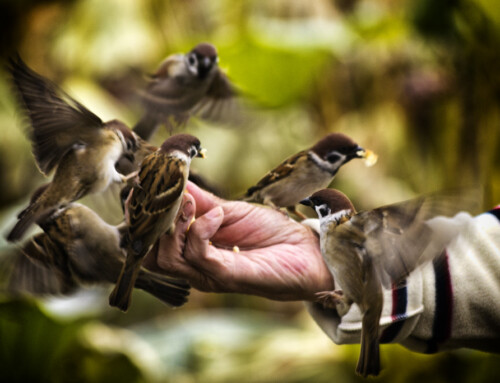In mid-August, the BOU supported my travel from Eastern Canada all the way to Lund, Sweden for the 14th EOU congress.
This was my second EOU conference, with the first being in Turku, Finland. What an incredible place to hold a conference. Lund is a beautiful town and the architecturally stunning university is rich in history, particularly in ornithological research. Just look at where the initial conference plenary by Thomas Alerstam was held (Photo #1). This plenary by the way was one of many conference highlights, and also a big reason why I wanted to attend the conference in the first place.

Figure 1 Venue for Thomas Alerstam’s plenary on the first day of the conference © Devin de Zwaan.
As is typical for EOU conferences, the program was full of interesting symposium and contributed sessions. So many, in fact, that it was often difficult to choose which room to be in at any given time. I was lucky enough to be speaking in a symposium on altitudinal flight patterns entitled “Vertical space use of flying animals”, co-convened by Cecilia Nilsson from Lund and Emily Cohen from the University of Maryland. I was presenting on some preliminary work where we attempted to use thermal imaging cameras to identify nocturnal migrants flying overhead and, subsequently, quantify potential risk from wind turbines in Atlantic Canada. The talks in the symposium were fascinating, ranging from using advanced eye-tracking technology to understand how soaring birds (and paragliders!) use social information to track thermals, to radar ecology at multiple spatial scales. Overall, it was a well attended symposium and follow up discussions about the talks were very valuable.
Other highlights for me, of course, were the migration and conservation sections. The poster sessions were also exciting and full of stimulating conversations. The EOU does something quite foreign compared to American conferences in that they hold poster pitches earlier in the day where for 2 minutes poster presenters are given an audience to convince people to visit their poster. I love this format and the diversity of unique ways that presenters generate interest around their poster is a must see. Of course, the mid-week birding excursion was another highlight. Watching hundreds of honey buzzards migrate overhead is always special.

Figure 2 Conference attendees counting migrating raptors during the mid-week excursion near Falsterbo, Sweden © Devin de Zwaan.
I have always enjoyed EOU conferences. I specifically wanted to attend this EOU because I knew there would be a lot of discussion around different methodologies for tracking migration, which is highly relevant to my current research. In general, I also find that going to both European and American ornithology conferences offer insights into diverse perspectives and approaches to research. There are subtle differences in the research priorities, the types of long-term datasets we have, and the way we address difficult ecology and conservation problems. I think that this diversity is immensely valuable, and I always encourage researchers from both sides of the Atlantic to experience it. I also have to say that the EOU conferences are particularly welcoming and the perfect size for socializing. It is always very easy to meet new people and develop exciting collaborations.
Overall, I had a great time in Lund at EOU2023. Thanks again to the BOU for helping me attend. I hopefully will be able to make it to the next EOU in Bangor, Wales in 2025.




